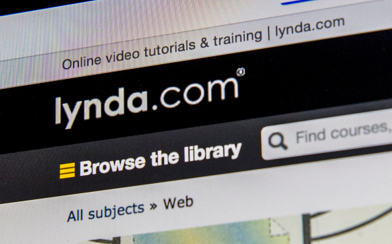Let’s face it: College is expensive. Anything schools can do to reduce the time students spend obtaining a degree and the amount of money students pay would be greatly appreciated. One reason students are in school for so long is the sheer number of potential fields they can get a degree in. This variety causes some students to spend as many as two years exploring fields and deciding on a major. Enter Lynda, an online tool that allows students to explore a variety of fields at a fraction of the cost. This tool is so helpful that U students should be required to use it daily to determine what field they want to get a degree in.
Lynda is far from perfect and has several flaws that make it unusable for anything beyond exploring potential majors. Its main flaw is that it only offers courses in fields that heavily involve technology such as development, design, web and video. This means fields that don’t involve technology, such as the humanities and some sciences, are underrepresented or, in some cases, nonexistent. But that does not mean people interested in getting degrees in these fields should not use Lynda. After all, even humanities students have to take at least one class in at least one of these fields during their undergraduate years. Lynda helps students explore, and part of exploring is being exposed to ideas that are new, unfamiliar and intimidating. If students are never exposed to this type of content they will never grow as people and may miss out on exciting opportunities.
Additionally, Lynda does not have any sort of grading system, meaning professors have no way of verifying that students actually looked at and attempted some of the material. This flaw, however, can be easily fixed by some tweaking on Lynda’s part. They could easily implement a system that tells the professor how long an account spends on a course. Associate that account with a student and Lynda gives administrators a way to verify the student was at least exposed to the ideas in the course. But even if this system was implemented, students would lack the ability to contact the creators of the course if they had questions or challenges, meaning that it would be impractical for higher level courses. At this point, the students would need to enroll in a course taught by a professor at the U in order to truly master the field.
Even in its current state, Lynda offers far more advantages than disadvantages. Lynda gives students the opportunity to interact with world-class professors who are “passionate about teaching.” Since students are often watching videos, there are typically no restrictions on the amount of students who can virtually interact with the professor. This allows students to gain valuable knowledge that they would not have access to if they were taking the course from somebody else who was far less qualified, such as a graduate student. Lynda is also free for people who have a Salt Lake City Library card. This means the time students spend learning this knowledge is free. This is a stark contrast to universities, where every moment in class costs the student money, and is Lynda’s ultimate trump card.
In a time when most students are struggling with student debt, Lynda offers a cheap and effective way to determine what field students ultimately want to go into. Although it should not supplant general education classes, U freshmen should be required to spend a certain amount of time on it daily in order to explore fields and elect a major. Due to its advantages, the U should incorporate Lynda in to freshmen curriculum to save students time and money.


